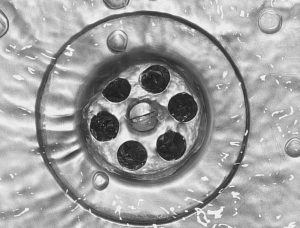
Welcome back to our plumbing blog! Today, we dive deep into the annals of history to trace the roots of plumbing and specifically focus on when indoor plumbing made its mark in human civilization. Let’s flush out the myths and uncover the facts!
When Was Plumbing Invented?
The concept of plumbing dates back thousands of years. Ancient civilizations realized the importance of clean water and sanitation and thus made provisions for both.
Indus Valley Civilization (circa 2500 B.C.): The people of the Indus Valley, present-day Pakistan and northwest India, had intricate sewage and drainage systems. Their towns like Mohenjo-Daro and Harappa boasted of wells in almost every home and wastewater channels leading to communal drains.
Ancient Egyptians (circa 1500 B.C.): The Egyptians developed copper pipes to build sophisticated bathrooms inside pyramids and construct elaborate irrigation and sewage systems.
Ancient Rome (circa 800 B.C. – 500 A.D.): The Romans took plumbing to the next level with their famous aqueducts, vast networks of pipes, and public baths. Their plumbing innovations not only provided water to the city but also removed waste efficiently.
When Was Indoor Plumbing Invented?
The luxury of indoor plumbing wasn’t commonplace until much later in history.
Ancient Rome: Although the Romans had sophisticated plumbing systems for public baths and fountains, the concept of indoor plumbing in private homes was a luxury few could afford. However, it was during this period that the seeds of modern indoor plumbing were sown.
19th Century: It wasn’t until the 19th century that indoor plumbing began to proliferate. In America, the White House received indoor plumbing in 1833, setting the tone for what would soon become an essential household feature.
When Did Indoor Plumbing Start?
While the primitive versions of indoor plumbing began with the ancient civilizations, widespread indoor plumbing adoption began much later.
Late 19th to Early 20th Century: Industrialization and urbanization brought with them the need for improved sanitation. In the late 1800s and early 1900s, cities in the U.S. and Europe began to install public sewer systems to combat diseases like cholera and typhoid. By the 1930s, many urban homes in these regions had at least rudimentary plumbing.
In conclusion, while the foundations of plumbing trace back thousands of years, the indoor plumbing that we’re familiar with today is relatively young. The advancements made over centuries, from the Indus Valley to Ancient Rome to modern times, showcase humanity’s continuous pursuit of convenience and better living conditions. The next time you turn on your tap or flush your toilet, take a moment to appreciate the rich history behind these everyday conveniences!
Stay tuned for more plumbing insights and stories! Until next time, keep those pipes clear and flowing.



